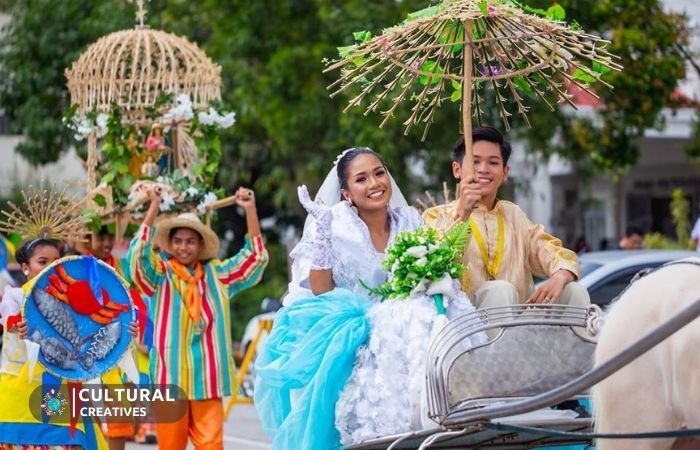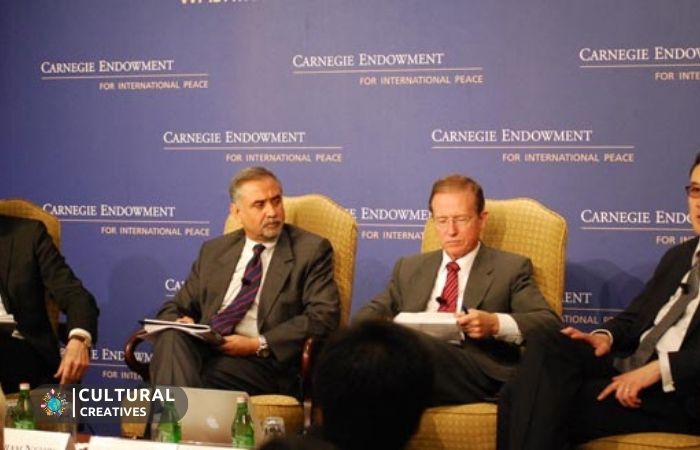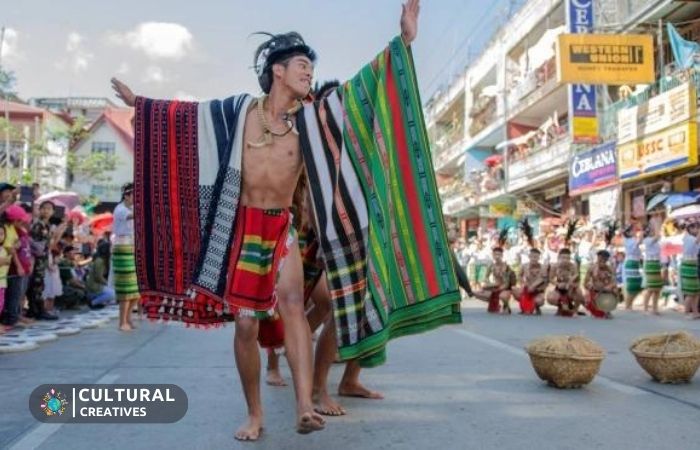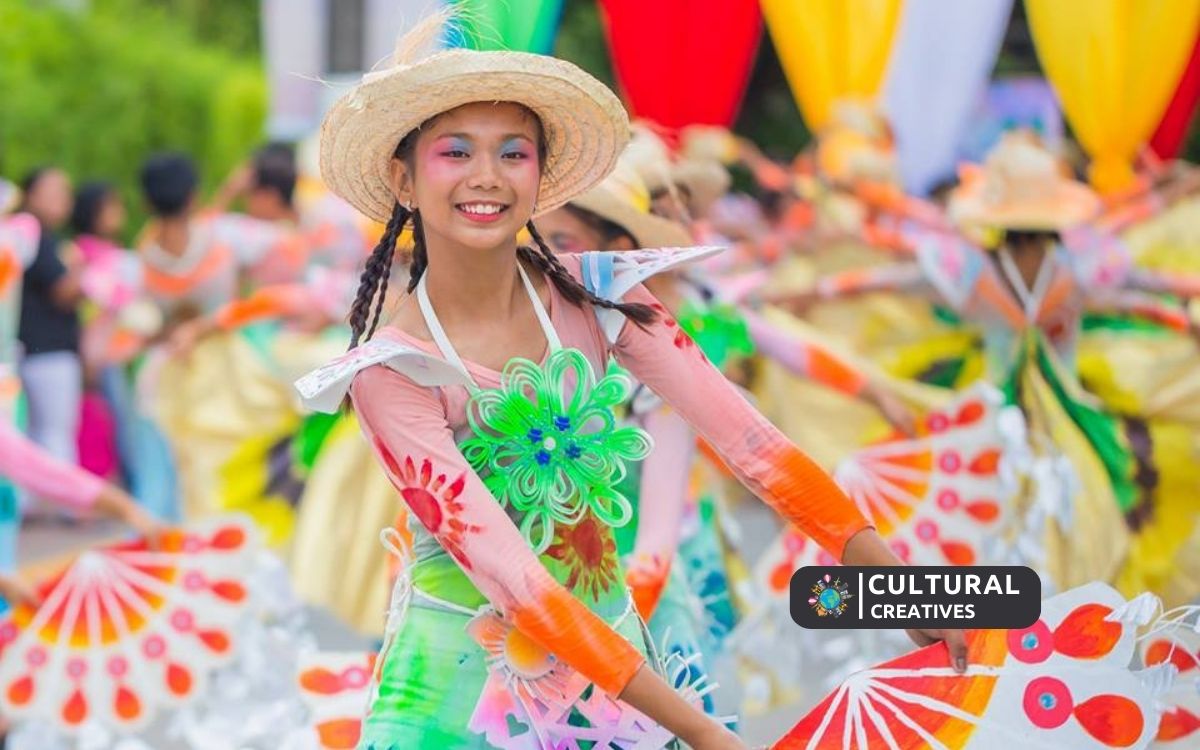The Singkaban Festival is a vibrant cultural celebration held annually in Bulacan, Philippines. It showcases the province’s heritage, arts, and crafts through various events and displays.
This week-long festivity coincides with the commemoration of the Feast of the Nativity of Mary, reflecting the deep religious roots of the province.
Local residents and tourists alike are treated to street dances, colorful parades, and cultural exhibitions. Artisans display intricately designed “singkaban” arches, symbolizing the skills and creativity inherent to the region. The festival’s highlights also include competitions, concerts, agricultural shows, and historical tours, all of which contribute to a lively atmosphere that celebrates the spirit of the Bulacan community.
History Of Singkaban Festival

Bulacan’s pride and joy. Discover a celebration steeped in artistry and tradition, an annual event that showcases the rich history of the province through colorful parades, intricate bamboo arches, and a display of local talents and craftsmanship. In this blog post, we will dive into the origins of the festival, its annual celebrations, and its significance to the beautiful tapestry of Bulacan’s culture.
Origin And Meaning Of Singkaban
The Singkaban Festival, deriving its name from “Sining at Kawayan,” which translates to ‘art and bamboo’, pays homage to the province’s cultural heritage. Singkaban refers to the intricately designed bamboo arches that are synonymous with the festival. These arches are a testament to the skill and creativity of Bulacan’s local artisans. The festival’s roots reach deep into the heart of Bulacan’s history, folklore, and identity.
Annual Celebration Dates And Location
The week-long Singkaban Festival is dutifully celebrated every year in the month of September, culminating around September 15th to coincide with the province’s commemoration of its founding anniversary. The festivities predominantly take place in Malolos City, the provincial capital of Bulacan, with various events and activities spread across the province’s municipalities, each adding their unique flair to the celebration.
Significance In Bulacan’s Cultural Tapestry
Far more than just a local festival, Singkaban serves as a cornerstone for Bulacan’s identity, uniting the people in a festive spirit that reflects their shared heritage. Traditional arts, culinary delights, and the renowned Bulacan hospitality are proudly displayed, offering both locals and visitors a taste of the province’s rich historical narrative and diverse cultural lifestyle.
Vibrant Events

Celebrated with grandeur and pomp in the province of Bulacan, Philippines, brims with cultural richness and a festive spirit that captivates both locals and tourists alike. This annual extravaganza offers a kaleidoscope of events that showcase the region’s heritage, art, and cuisine. Delving into the vibrant events of the Singkaban Festival, we find a series of activities that highlight the creativity and traditions of the Bulakeños.
The Opening Rituals And Parades
Electric excitement fills the air as the Singkaban Festival kicks off with colorful opening rituals and parades. The streets buzz with energy as elaborate floats pass by, each representing different municipal themes. Participants clad in vibrant costumes dance to the rhythm of lively music, while the rituals serve as a tribute to the cultural identity of the province.
Contests And Exhibitions Showcasing Local Artistry
The festival transforms into a canvas displaying Bulacan’s finest art forms through various contests and exhibitions. Enthusiastic artisans share their crafts ranging from intricate bamboo work, known as Singkaban art, to folk paintings. These exhibitions become a hub for artists to celebrate their work and for visitors to witness the region’s vibrant art scene.
Traditional Dances And Music Of The Festival
Dance troupes take center stage with performances that tell stories of folklore and history through graceful motions and traditional music. These captivating dances, accompanied by indigenous instruments, offer a glimpse into Bulacan’s soulful past, seamlessly blending with the present festivities.
Cultural And Economic Impacts

The Singkaban Festival stands as a captivating spectacle that not only illuminates the rich cultural tapestry of Bulacan, Philippines, but also significantly influences the area both culturally and economically. The multifaceted impacts of the festival can be exemplified through the revival of historical heritage, stimulation of tourism and local businesses, and the strengthening of community ties.
Related: Read more Best 31 Religious & Non Religious Festivals in the Philippines.
Revival And Preservation Of Historical Heritage
This annual celebration, with its vibrant parades and intricate bamboo art installations, is a living museum that showcases the province’s rich history and artistic heritage. Rooted in the spiritual traditions of the past, the festival plays a crucial role in continuing the legacy for future generations.
- Enlightenment of the younger generation about traditional crafts
- Reenactment of historical events promoting knowledge retention
- Cultural workshops that encourage participation and skill development
Boosting Local Tourism And Business Opportunities
Bulacan experiences a surge in tourism as visitors from across the nation and overseas flock to witness the spectacle. This influx provides an exceptional boost to the local economy, spotlighting local businesses and attractions.
| Business Type | Impact |
|---|---|
| Accommodations | Increased occupancy rates and revenue |
| Restaurants & eateries | Heightened demand for local cuisine |
| Retail & souvenir shops | More sales of local handicrafts and products |
| Transportation services | Rise in utilization of taxis, tricycles, and jeepneys |
Community Involvement And Societal Bonds Strengthened
The community engages collectively in preparations and celebrations, fostering a spirit of unity and collaboration. Volunteers, local artists, and civic groups come together, underscoring the solidarity inherent within the Bulacan populace.
- Promotion of community participation in cultural protection
- Volunteering opportunities that enhance civic pride
- Family and social connections are refreshed and celebrated
Behind The Scenes

A dive into the meticulous coordination it takes to bring to life this vibrant expression of Bulacan’s cultural heritage. From local government strategies to the integration of modern elements while preserving authenticity, and the enthusiastic involvement of younger generations – every facet contributes to the festival’s success.
The Role Of Government And Local Organizations
Facilitating the Singkaban Festival requires a seamless collaboration between the government and local organizations. Here’s a snapshot of their functions:
- Funding – Securing financial resources for events, performances, and logistics.
- Permits and Safety – Ensuring all events comply with local laws and safety guidelines.
- Promotion – Marketing the festival locally and globally to attract tourism and media attention.
The local government, in partnership with cultural committees, works tirelessly to coordinate artists, craftsmen, and performers, cementing Singkaban’s status as a must-see attraction.
Challenges Of Modernization And Authenticity
Melding the traditional with the contemporary can be a tightrope walk. Organizers battle to keep the Singkaban Festival relevant to the digital age while maintaining its cultural integrity. This includes:
- Introducing innovative themes each year without diluting the festival’s historic roots.
- Employing technology to enhance the experience yet ensuring it doesn’t overshadow traditional elements.
- Addressing expectations from new audience demographics while honoring local traditions.
Organizers must constantly evaluate and strike a careful balance between evolution and heritage preservation.
Participation Of The Youth And Educational Institutions
Young minds bring fresh perspectives, and their involvement is crucial for the festival’s longevity. Schools and universities play a pivotal role:
| Institution Type | Contribution to the Singkaban Festival |
|---|---|
| High Schools | Participation in traditional dances, band competitions, and exhibits. |
| Universities | Research and documentation of the festival’s history, ensuring its legacy. |
Engagement with the Singkaban Festival provides invaluable hands-on experience for students in event organization, cultural studies, and the arts. It fosters a sense of pride and responsibility towards preserving their cultural heritage.
Experience As A Visitor

As a visitor, you’re invited to immerse yourself in the convivial spirit, captivating performances, and the artistic prowess that are eminent in this grand fiesta. It offers a unique opportunity to explore traditional Filipino customs, making it an unforgettable experience for every attendee.
Travel Tips And Best Practices
Planning a smooth visit to the Singkaban Festival begins with foresight and preparation. Consider these tips:
- Accommodation: Book in advance to secure a place close to the festivities.
- Transport: Familiarize yourself with local transportation options.
- Clothing: Dress comfortably and weather-appropriate attire. Bring a hat and sunscreen.
- Budget: Allocate funds for entrance fees, food, and souvenirs.
- Local Knowledge: Learn a few basic phrases in Filipino to navigate easily.
- Health: Stay hydrated and have some snacks handy.
Must-see Highlights And Hidden Gems
The Festival is a tapestry of cultural exhibitions and events. Don’t miss:
- The Grand Parade: Witness the colorful floats and energetic dance troupes.
- Craft Exhibits: Admire the intricate bamboo art installations, the Singkaban.
- Culinary Offerings: Taste the local flavors with dishes like lechon and halo-halo.
Among the hidden gems are the offbeat cultural workshops and the intimate music sessions held by local artists. Inspect the schedule in advance to catch these exclusive showcases.
Interacting Respectfully With Local Traditions
Singkaban Festival is built on deep-seated traditions. To interact with respect:
- Participate: Join in the dances and activities with an open heart but always ask if unsure about protocol.
- Be Attentive: Listen to local anecdotes and stories to understand the significance of each ritual.
- Photography: Always ask for permission before capturing images of people or cultural artifacts.
- Support: Choose to buy from local artisans and vendors to contribute to the community.
Conclusion
As we wrap up our journey through the vibrant Singkaban Festival, we’re reminded of the rich cultural tapestry it weaves. This festivity, bursting with life and color, invites everyone to experience the Philippines’ unique heritage. Let’s carry the joy and unity celebrated here into our daily lives, until we dance in Bulacan’s streets once again.






